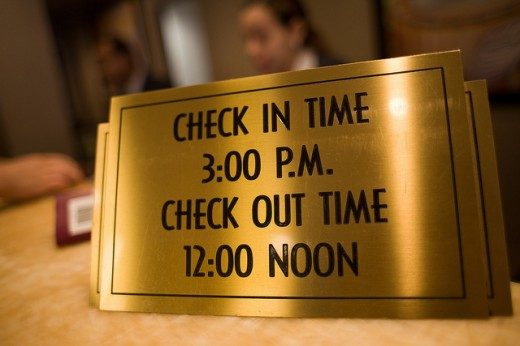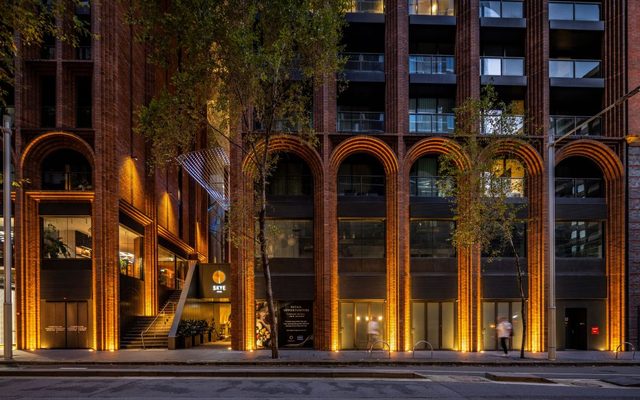This article is from the Australian Property Journal archive
THE outlook is bright for Australia’s hotel market, which is expected to continue improving on the back of strong growth in international tourism arrivals and investments in tourism-related infrastructure, according to Colliers International.
Colliers said Sydney and Melbourne in particular are set to benefit from a number of positive fundamentals including falling office vacancy levels.
“Sydney continues to be the leader in hotel performance across the country, with occupancy levels above 87%, average room rates up 6% and RevPAR increases every year for the past seven years,” Colliers head of hotels Gus Moors said.
“Importantly, the hotel market is impacted by the strength of the corporate segment. A pick-up in business travel will contribute to increased confidence in the CBD hotel sector. This is most pronounced in the Sydney market where our Colliers Edge data service is predicting office vacancy to be at its lowest level since January 2008, and we don’t expect vacancy levels to increase until the end of 2019.
“In addition, Sydney CBD white collar demand is forecast to increase by 2.9% by the end of 2016, well above the annual average. This all points to a strong performance, particularly in the markets of Sydney and Melbourne,” he added.
Melbourne has maintained occupancy in the mid 80’s and is the second highest performing market in both rate and occupancy behind Sydney.
In the sunshine state, Cairns in particular continues to record high occupancies at 83.3% year to date to August 2016, up 5.4% compared with the same period of 2015. Occupancy on the Gold Coast is similarly up year to date, by 3.7% to 72.2%. Stronger occupancy levels have allowed hotels to lift room rates, with Cairns demonstrating growth of 7.2% and the Gold Coast 5.2% over the year to date period. These conditions have allowed both markets to achieve the highest RevPAR growth rates over the period in major markets throughout the country at 13.0% for Cairns and 9.1% for the Gold Coast.
Brisbane, in contrast, continues to be challenged by supply growth outstripping demand, with occupancy levels down 1.9% to 70.8% year to date. Room rates continue to come under pressure falling by 6.6% over the period as the new hotels compete aggressively for customers. As a result RevPAR levels are down 8.4% for the first eight months of the year compared to the same time last year.
Perth has continued to experience a decline in occupancy in 2016 falling to below 80%. Average room rates, which in 2014 were the second highest in the country after Sydney, have now dropped to an average of $183, a fall of 6% on the previous year and now ranks third in the country after Sydney and Melbourne. The decline in average room rates coincides with the shift in the mining sector from development to production, which requires lower levels of staff while new mining development projects have been shelved.
Adelaide has experienced some decline in occupancy falling to the mid 70’s and average room rates have remained relatively stable at just under $150. This was a consequence of supply increasing at a faster rate than demand, with three new hotels having entered a relatively small market.
Canberra hotel market has recorded occupancy levels of 72% in the year to August 2016, down marginally at 0.6 percentage points, average room rates of $162 (up marginally at 0.1%) and RevPAR over $117 (down marginally at -0.8%).
The Hobart hotel market is performing strongly showing 80.2% occupancy in the year to August 2016 (up 3.5%), average room rates of $164.75 (up 3.3%) and RevPAR up by almost 7% at $132.06.
Meanwhile Australia received 7.2 million international visitors (up 10%, or 680,000) and 248 million international visitor nights (up 5.0%) for the year ending June 2016.
Moors said 13 of Australia’s top 20 markets had record visitor numbers during the year.
“The holiday and education segments underpinned this strong growth.
“Interestingly, nights spent in hotels, motels and resorts increased by 9% to 27.5 million on the back of strong growth in the holiday segment.
“The opening of the International Convention Centre at the end of 2016 will also undoubtedly have a positive impact on the hotels in Sydney with major conventions already confirmed, including the Amway China Leadership seminar in 2017 with 10,000 delegates and the SIBOS conference in 2018 with 6,000 delegates,” Moors said.
In the year to September 2016, Colliers tracked 42 hotel transactions representing a total of $2.2 billion – this is down from 52 sales totalling $3.1 billion over the same period in 2015.
The $700 million purchase of the Ribbon Development in Sydney’s Darling Harbour has been the largest single transaction this year, followed by the $237 million purchase of the Novotel on Collins Hotel in Melbourne.
Australian Property Journal




